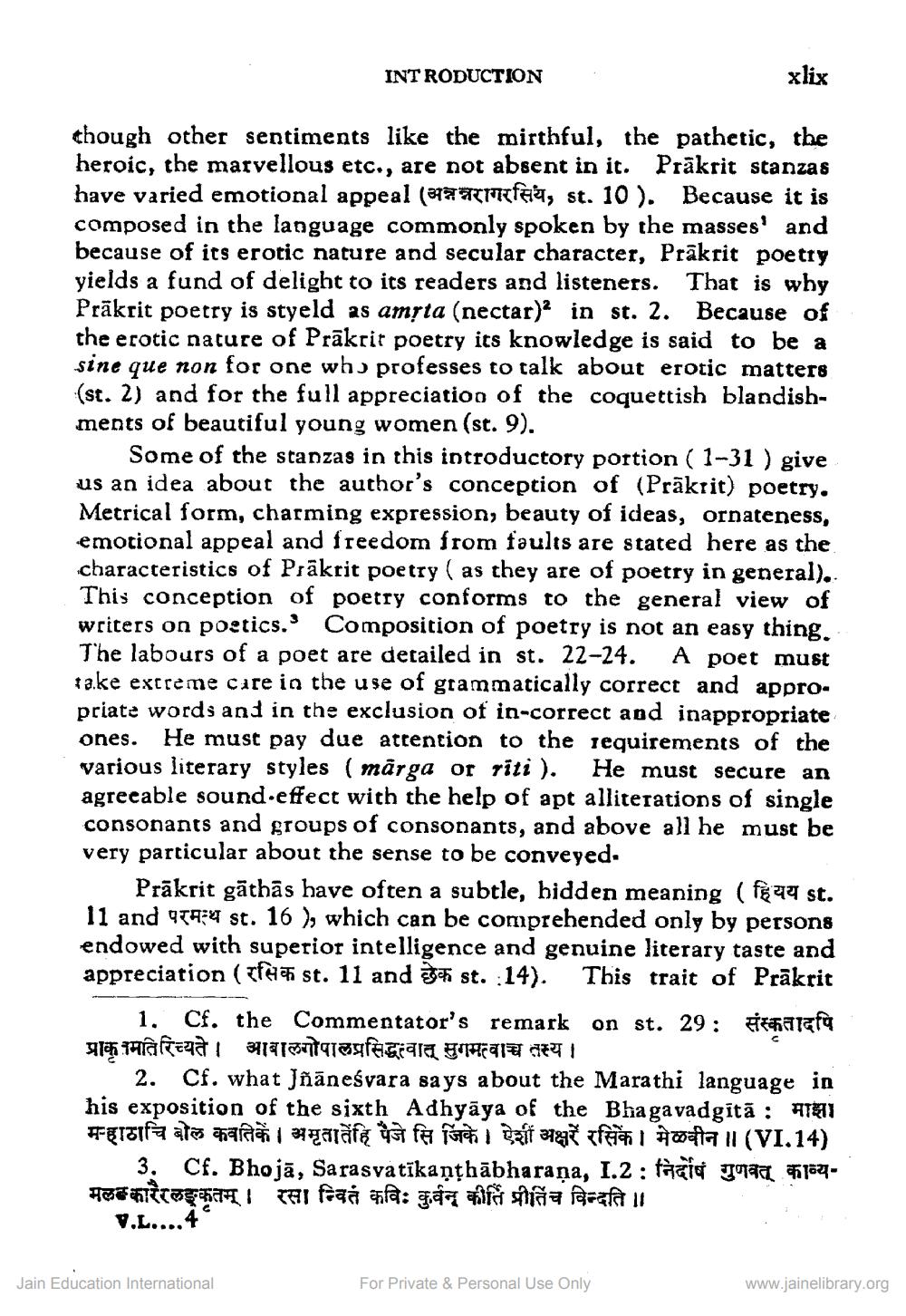________________
INTRODUCTION
xlix
though other sentiments like the mirthful, the pathetic, the heroic, the marvellous etc., are not absent in it. Prākrit stanzas have varied emotional appeal (29790Mfait, st. 10). Because it is composed in the language commonly spoken by the masses' and because of its erotic nature and secular character, Prākrit poetry yields a fund of delight to its readers and listeners. That is why Prākrit poetry is styeld as amsta (nectar)2 in st. 2. Because of
tic nature of Prākrir poetry its knowledge is said to be a sine que non for one who professes to talk about erotic matters (st. 2) and for the full appreciation of the coquettish blandishments of beautiful young women (st. 9).
Some of the stanzas in this introductory portion (1-31 ) give us an idea about the author's conception of (Prākrit) poetry. Metrical form, charming expression, beauty of ideas, ornate emotional appeal and freedom from faults are stated here as the characteristics of Prākrit poetry (as they are of poetry in general). This conception of poetry conforms to the general view of writers on poetics. Composition of poetry is not an easy thing. The labours of a poet are detailed in st. 22-24. A poet must take extreme care in the use of grammatically correct and appro. priate words and in the exclusion of in-correct and inappropriate ones. He must pay due atcention to the requirements of the various literary styles (märga or riti ). He must secure an agreeable sound effect with the help of apt alliterations of single consonants and groups of consonants, and above all he must be very particular about the sense to be conveyed.
Prākrit gāthās have often a subtle, hidden meaning (feze st. 11 and 97434 st. 16 ), which can be comprehended only by persons endowed with superior intelligence and genuine literary taste and appreciation ( f st. 11 and 3 st. 14). This trait of Prākrit
1. Cf. the Commentator's remark on st. 29: Starefa प्राकृतमतिरिच्यते। आबालगोपालप्रसिद्धत्वात् सुगमत्वाच्च तस्य।
2. Cf. what Jñāneśvara says about the Marathi language in his exposition of the sixth Adhyāya of the Bhagavadgitā : #1411 giga ato garai 1 garāfe us for its i esiti chalal hoeft II (VI.14)
3. Cf. Bhojā, Sarasvatīkaņțhābharaṇa, 1.2: taaid Ioan $184. मलककारैरलङ्कतम् । रसा न्वितं कविः कुर्वन् कीर्ति प्रीतिच विन्दति ॥
V.L....4
Jain Education International
For Private & Personal Use Only
www.jainelibrary.org




